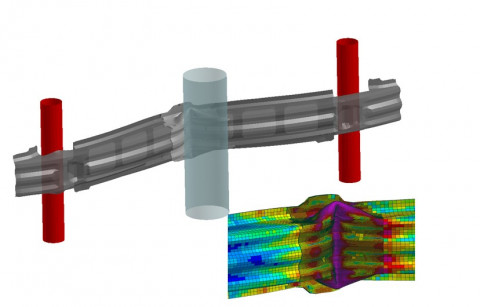ESI Unleashes Virtual Performance Solution Version 2016
Paris, France – November 2, 2016 – ESI Group, leading innovator in Virtual Prototyping software and services for manufacturing industries, announces the latest release of Virtual Performance Solution (VPS). ESI’s flagship software is a unique solution allowing manufacturers to face emerging design challenges — including those related to lightweight and green vehicles — while avoiding over-engineering. It enables design and simulation engineers to test rapidly their innovations on virtual prototypes, rather than real ones, and to evaluate the impact of real driving conditions. VPS also offers a distinctive approach, allowing the virtual testing of product performance across multiple domains, using a single core model. With this latest release of ESI Virtual Performance Solution, manufacturers can predict in a more efficient way the impact of use of composite and advanced lightweight materials on product performance, and simulate the vibration-induced noise.
As automotive OEMs strive to develop lightweight vehicles, they continuously face challenges related to the introduction of new materials, new grades, and new processes. The selection of advanced lightweight materials, composite materials, ultra-high strength steels or aluminums can hardly be based on existing know-how. Rather, today’s innovative multi-material strategies require a precise understanding, and an early prediction, of the as assembled behavior. Any level of uncertainty may lead to conservative decisions and costly over-engineering.
Virtual Performance Solution 2016 offers new functionalities to help OEMs tackle challenges related to the introduction of new materials, and thereby enables them to design the next generation of lightweight vehicles. First, thanks to new dynamic re-meshing capabilities, the accuracy of rupture propagation after an impact is now better captured; important as engineers investigate in detail what happens in the crash rupture area when using new materials and novel assembly methods.
Second, Virtual Performance Solution 2016 includes new advanced composite crash and strength models that enable prediction of the rupture behavior of composite parts and their capability to absorb energy during a crash. In this new version, the accuracy of composite structural performance prediction is importantly increased by taking into account manufacturing effects, such as fiber orientation, that are inherited from the composite forming process. (For more information on this topic please see our latest technical paper, presented at the 17th European Conference on Composite Materials (ECCM).)
Another important challenge for car makers is meeting the new environmental regulations aimed at reducing the level of noise generated by cars. The European Commission recently introduced stringent new noise limitations, which will become applicable in 2026. In the case of electric and hybrid vehicles, which are exceedingly quiet, legislators are considering adding noise so as to reduce the risk of collision with pedestrians.
To solve noise related problematics in an effective way, Virtual Performance Solution 2016 offers extended capabilities for Noise, Vibration & Harshness (NVH) and now enables the prediction of noise radiation, combining the Finite Element Method for the structure and the Boundary Element Method for the outside of the car. The same single-core model is used for the complete vehicle, which facilitates setting the correct pre-loading conditions; mandatory to high quality prediction of structural responses. To achieve greater accuracy, the single-core model also integrates frequency dependency and manufacturing history, even for very innovative and advanced materials and production processes. The use of this single-core model for all engineering teams delivers a drastic reduction of development cycles and costs.
With this single core model, engineers can not only perform regulatory crash and NVH tests, they can also run virtual tests to evaluate real driving conditions. Thanks to VPS’s water flow module, they can detect potential leakages and assess how rain will affect driving visibility.
For more information about ESI Virtual Performance Solution, please visit www.esi-group.com/products/virtual-performance-solution
Join ESI’s customer portal myESI to get continuously updated product information, tips & tricks, view the online training schedule and access selected software downloads: https://myesi.esi-group.com
For more ESI news, visit: www.esi-group.com/company/news
ESI Group – Relations Presse
Céline Gallerne
Celine.Gallerne [at] esi-group.com'; // --> //-->
+33 1 41 73 58 46
